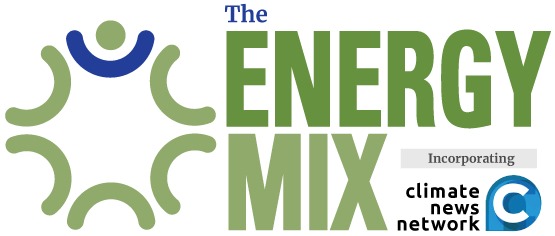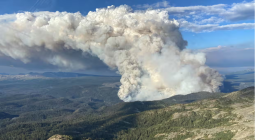Canada’s Wildfire Risk to Surge with Rapid Climate Change, Study Warns
Limiting global heating to 2°C could significantly reduce the risk of devastating wildfires in Canada, finds a new study in the journal Nature.
But the study finds that exceeding that threshold may lead to more wildfires similar in scale to Canada’s record-breaking 2023 fire season, when nearly 150,000 square kilometres burned across the country—more than seven times the 1986–2022 average of 21,000 square kilometres.
Under rapid climate change, annual burned areas could range from 102,000 to 117,000 square kilometers by the 2090s. However, keeping global warming below the 2°C target set by the Paris climate agreement could help limit future wildfire damage. That scenario keeps the 2090s area burned near modern norms recorded from 2004 to 2014, the study authors say.
At higher levels of warming, they add, the resulting carbon emissions and loss of tree cover will further impact global carbon cycling and climate change, worsening the factors that contribute to more severe wildfires. “Under rapid climate change, wildfire emissions would dominate Canada’s anthropogenic emissions by the end of the century,” they write.
Canada has experienced devastating wildfire seasons in recent years as climate change produces hotter, drier conditions. In 2023, thousands of fires burned tens of millions of acres, releasing smoke that affected major North American cities with harmful levels of air pollution. And in the past few years, thousands of Canadians have had to evacuate their homes as fires burned through communities across the country, including in Alberta, British Columbia, the Northwest Territories, and Nova Scotia.
The new study projects the impacts of wildfire seasons in Canada toward the end of the century under varying climate scenarios. At a global level, this is generally done using land surface models (LSMs) to assess wildfires based on combinations of atmospheric drivers, simulated soil moisture, lightning ignitions, human activity, and fuel availability.
But those models are based on forests in the global south—where more than 90% of fires occur, the authors say. So they may underestimate the scale of boreal regions like Canada, which are affected differently by factors like relative humidity, among others.
Canadian analysts also tend to use a forest fire weather index to measure wildfire risk, but it does not show the amount of area burned. The researchers bridged this gap by creating an LSM tailored to Canada. Their new model integrated forest weather indicators and a Canadian wildfire behaviour prediction tool to represent “feedbacks between climate, vegetation biomass, anthropogenic ignition/suppression,” and “lightning ignitions” that were shown to be a “key uncertainty.”
The model projected that rapid climate change will continue to increase forest burned area and fire carbon emissions two- to fourfold by the end of the century, primarily in the forested Canadian Shield, interior plains, and western mountain areas. But that can be avoided in a “tempered” climate scenario.
The tailored LSM also allowed the researchers to more accurately project the extent of forest burning in Canada. But future models could have even greater accuracy, they say, when other factors like depth of fire burn, peatland hydrology, overwintering fire, landscape fragmentation, and fire suppression policy are added to the model.
The study authors note that their model does not fully account for how wildfires and other natural disasters are caused by random variables. That meant they couldn’t project the frequency of future fire events.
Cover photo: Denise Black/Facebook





